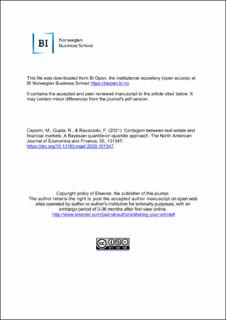| dc.contributor.author | Motoki, Kosuke | |
| dc.contributor.author | Saito, Toshiki | |
| dc.contributor.author | Velasco, Carlos | |
| dc.date.accessioned | 2023-09-25T13:32:41Z | |
| dc.date.available | 2023-09-25T13:32:41Z | |
| dc.date.created | 2022-04-30T18:35:58Z | |
| dc.date.issued | 2022 | |
| dc.identifier.issn | 0950-3293 | |
| dc.identifier.uri | https://hdl.handle.net/11250/3091846 | |
| dc.description.abstract | Thoughts and associations are spontaneously generated and situated. A growing body of research on crossmodal correspondences has revealed that individuals tend to associate information across sensory modalities. However, most of the findings have been based on restricted sensory pairs/items and the role of context remains largely unexplored. Relying on crossmodal correspondence studies and the theory of situated conceptualization, the present study aimed to study spontaneous crossmodal correspondences and the role of context (background settings, culture) in modulating them. Japanese and British participants (n = 604) were presented with shape stimuli (round and angular) and spontaneously generated words describing the stimuli in different contexts (geometric shapes, logo in food packaging, and logo in non-food products). The results demonstrated that individuals spontaneously associate shape features with different senses, something that is influenced by context (background settings, culture). Geometric shapes were associated with visual and auditory descriptors, while shapes in the food context were linked with chemosensory (olfactory and taste) descriptors. Moreover, Japanese participants were more likely to generate touch descriptors, while British participants were more likely to use auditory descriptors. Together, our findings reveal how multisensory associations are spontaneously generated and how these associations are grounded in contexts. | en_US |
| dc.language.iso | eng | en_US |
| dc.publisher | Elsevier | en_US |
| dc.rights | Attribution-NonCommercial-NoDerivatives 4.0 Internasjonal | * |
| dc.rights.uri | http://creativecommons.org/licenses/by-nc-nd/4.0/deed.no | * |
| dc.subject | Crossmodal correspondences | en_US |
| dc.subject | Grounded cognition | en_US |
| dc.subject | Sensory linguistics | en_US |
| dc.title | Spontaneous crossmodal correspondences grounded in contexts | en_US |
| dc.title.alternative | Spontaneous crossmodal correspondences grounded in contexts | en_US |
| dc.type | Peer reviewed | en_US |
| dc.type | Journal article | en_US |
| dc.description.version | acceptedVersion | en_US |
| dc.rights.holder | Elsevier | en_US |
| dc.source.journal | Food Quality and Preference | en_US |
| dc.identifier.cristin | 2020370 | |
| cristin.ispublished | false | |
| cristin.fulltext | postprint | |
| cristin.qualitycode | 1 | |

